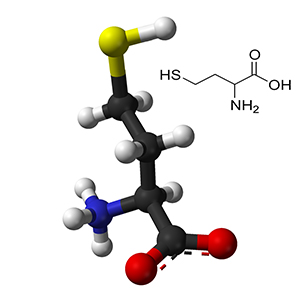Homocysteine and atrial fibrillation: novel evidences and insights

Submitted: February 20, 2022
Accepted: April 9, 2022
Published: April 20, 2022
Accepted: April 9, 2022
Abstract Views: 1794
PDF: 683
Publisher's note
All claims expressed in this article are solely those of the authors and do not necessarily represent those of their affiliated organizations, or those of the publisher, the editors and the reviewers. Any product that may be evaluated in this article or claim that may be made by its manufacturer is not guaranteed or endorsed by the publisher.
All claims expressed in this article are solely those of the authors and do not necessarily represent those of their affiliated organizations, or those of the publisher, the editors and the reviewers. Any product that may be evaluated in this article or claim that may be made by its manufacturer is not guaranteed or endorsed by the publisher.
Similar Articles
- Elio Gorga, Marta Scodro, Francesca Valentini, Renzo D'Ortona, Mariachiara Arisi, Edoardo Sciatti, Ivano Bonadei, Valentina Regazzoni, Enrico Vizzardi, Marco Metra, Piergiacomo Calzavara Pinton, Echocardiographic evaluation of diastolic dysfunction in young and healthy patients with psoriasis: A case-control study , Monaldi Archives for Chest Disease: Vol. 88 No. 3 (2018)
- Maria Teresa La Rovere, Egidio Traversi, Prognostic impact of digoxin use for rate control of atrial fibrillation in patients ≥75 years of age , Monaldi Archives for Chest Disease: Vol. 88 No. 2 (2018)
- Gian Francesco Mureddu, Current multivariate risk scores in patients undergoing non-cardiac surgery , Monaldi Archives for Chest Disease: Vol. 87 No. 2 (2017)
- Pierfranco Terrosu, Aspirin use for primary prevention in elderly patients , Monaldi Archives for Chest Disease: Vol. 84 No. 1-2 (2015): Cardiac series
- Francesco Orso, Riccardo Barucci, Stefania Fracchia, Giulio Mannarino, Alessandra Pratesi, Francesco Fattirolli, Treatment of very old patients with non valvular atrial fibrillation. The valuable opportunity offered by New Oral Anticoagulants, to be cautiously used , Monaldi Archives for Chest Disease: Vol. 80 No. 4 (2013): Cardiac Series
- Maurizio Giuseppe Abrignani, Furio Colivicchi, Thromboembolic and hemorrhagic risk stratification in patients with atrial fibrillation. Part I: the thromboembolic risk , Monaldi Archives for Chest Disease: Vol. 80 No. 2 (2013): Cardiac series
- Maurizio Giuseppe Abrignani, Vincenzo Abrignani, Thromboembolic and hemorrhagic risk stratification in patients with atrial fibrillation. Part II: hemorrhagic risk and guidelines recommendations , Monaldi Archives for Chest Disease: Vol. 80 No. 3 (2013): Cardiac series
- Gian Francesco Mureddu, Pompilio Faggiano, Fausto Rigo, Cardiovascular risk prediction in the real world. The discouraging evidences coming from literature , Monaldi Archives for Chest Disease: Vol. 78 No. 4 (2012): Cardiac series
- E. Vizzardi, S. Nodari, C. Fiorina, M. Metra, L. Dei Cas, Raised homocystein plasma concentration in patients with Heart Failure: clinical significance , Monaldi Archives for Chest Disease: Vol. 68 No. 2 (2007): Cardiac series
- Mario Sorice, Francesco Paolo Tritto, Chiara Sordelli, Rosario Gregorio, Luigi Piazza, N-3 polyunsaturated fatty acids reduces post-operative atrial fibrillation incidence in patients undergoing “on-pump†coronary artery bypass graft surgery , Monaldi Archives for Chest Disease: Vol. 76 No. 2 (2011): Cardiac series
You may also start an advanced similarity search for this article.

 https://doi.org/10.4081/monaldi.2022.2241
https://doi.org/10.4081/monaldi.2022.2241





